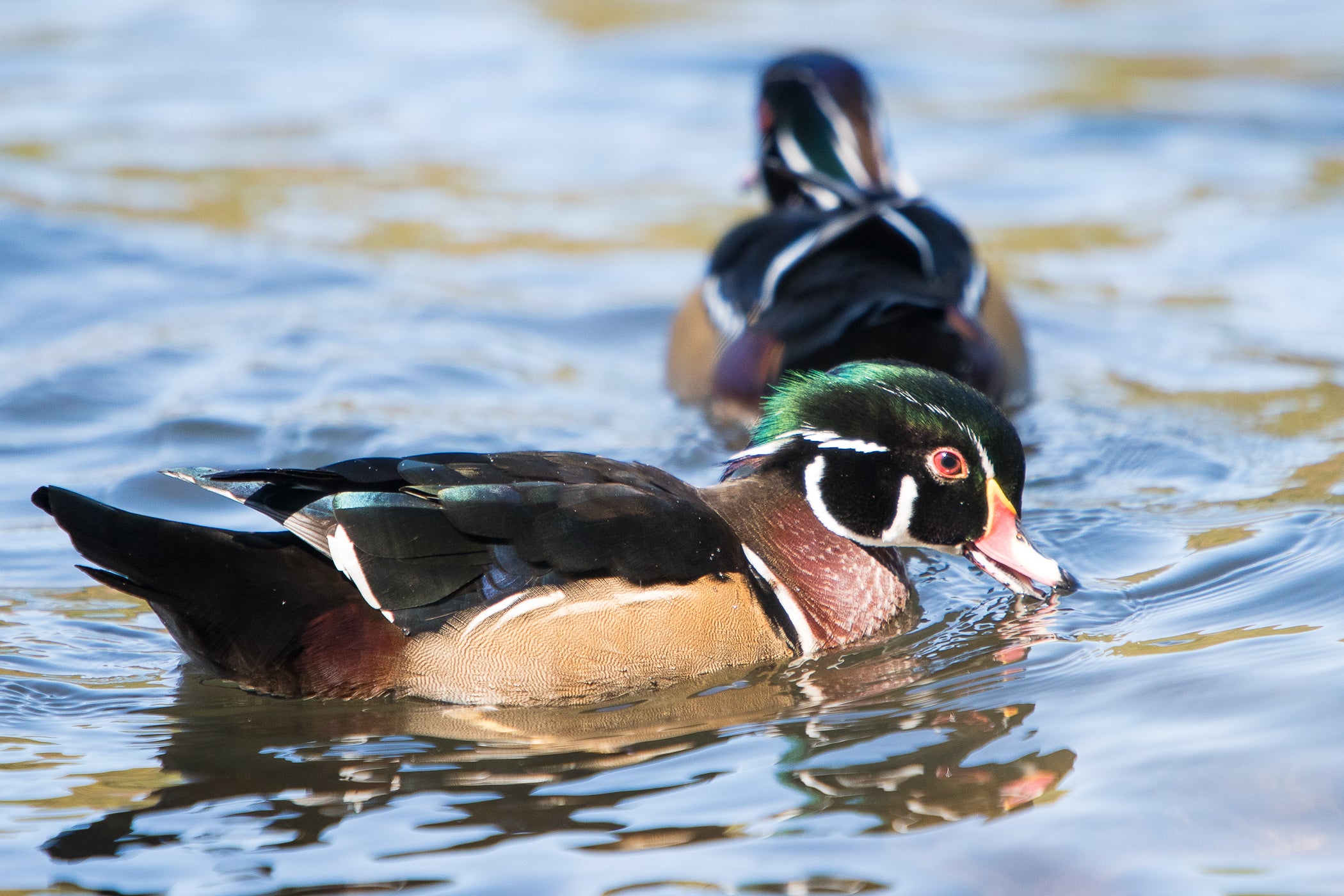By DAVID RAINER, Alabama Department of Conservation and Natural Resources
In the waterfowl world, Alabama’s most abundant species, the wood duck, is not known for migrating long distances.
It turns out, the wood duck migration patterns follow a “boy meets girl” scenario. Boy meets girl; girl flies home; boy follows.
When the Minnesota waterfowl season opened, four wood ducks that were banded in Alabama were harvested more than 1,000 miles from home.
Seth Maddox, the Alabama Wildlife and Freshwater Fisheries (WFF) Division’s Migratory Bird Coordinator, said one of the birds harvested in Minnesota was 6 years old, banded in 2014 as a hatch-year male. The other three were banded in recent years.
“What is interesting in our data is that our males, especially juvenile males, will pair up with migrant females and follow them back to their natal nesting ground,” Maddox said. “Our females tend to hang around where they were hatched. Whatever female a male pairs up with, he follows her.”
Alabama has been banding wood ducks since 1956. During that time, WFF has banded about 28,000 wood ducks. The band recovery rate is about 7.7 percent, which may seem low, but Maddox said that is about the national average for all banded waterfowl.
“We have recovered a little more than 2,100 bands,” Maddox said. “If you look at waterfowl overall, the band recovery is between four and five percent. Some birds are smarter than others, and others die before they are harvested. Recovery rate is pretty low for most species. About 50 percent of the wood duck bands are recovered in Alabama.”
Although the aforementioned birds traveled as far as Minnesota, Maddox said most wood ducks don’t make such a long journey.
“The states next to or near us harvest more than any other states,” he said. “We do get a good bit of band recovery in Georgia, South Carolina, Tennessee, Louisiana and Mississippi.”
While it’s fairly rare to have bands recovered as far away as Minnesota, Maddox said bands have been recovered in 30 different states since the program’s inception.
“We’ve had bands recovered from Maine to Florida, in Texas, North Dakota and three Canadian provinces – Manitoba, Ontario and Quebec,” he said. “More males are harvested out of state, which goes back to our males pairing up with migrant females. The males likely get killed near where the female is from or on the way back south during the next winter.”
Getting a firm count on the wood duck population is difficult for waterfowl managers because of the bird’s habitat preferences.
“We can’t count wood ducks from a plane like we do with other species,” Maddox said. “Wood ducks live in beaver swamps and wetlands. That’s why we have a banding program, so we can track harvest rates and survival and look at age ratios. With this data, we can assess what the population is doing so we can set seasons and bag limits because we can’t count them from the air.”
WFF’s banding work is conducted during the heat of the summer. Maddox said biologists look for a suitable clear spot on the edge of a pond or river. The ducks are baited with grain, and game cameras are erected to monitor the activity at the bait site over a two-week period.
A 30-foot by 60-foot rocket net is then set up and fired when the ducks congregate at the bait site. WFF officials remove the ducks as quickly as possible from the net and put them in crates before they start banding the birds.
“Our banding runs from July until the end of September each year,” Maddox said. “It’s a hot job, but it provides significant data. We age and sex the birds before we band them. We’re getting different ages because wood ducks in Alabama will nest up to three times a year. We’re getting adult males, adult females and three different ages of hatch-year birds.”






